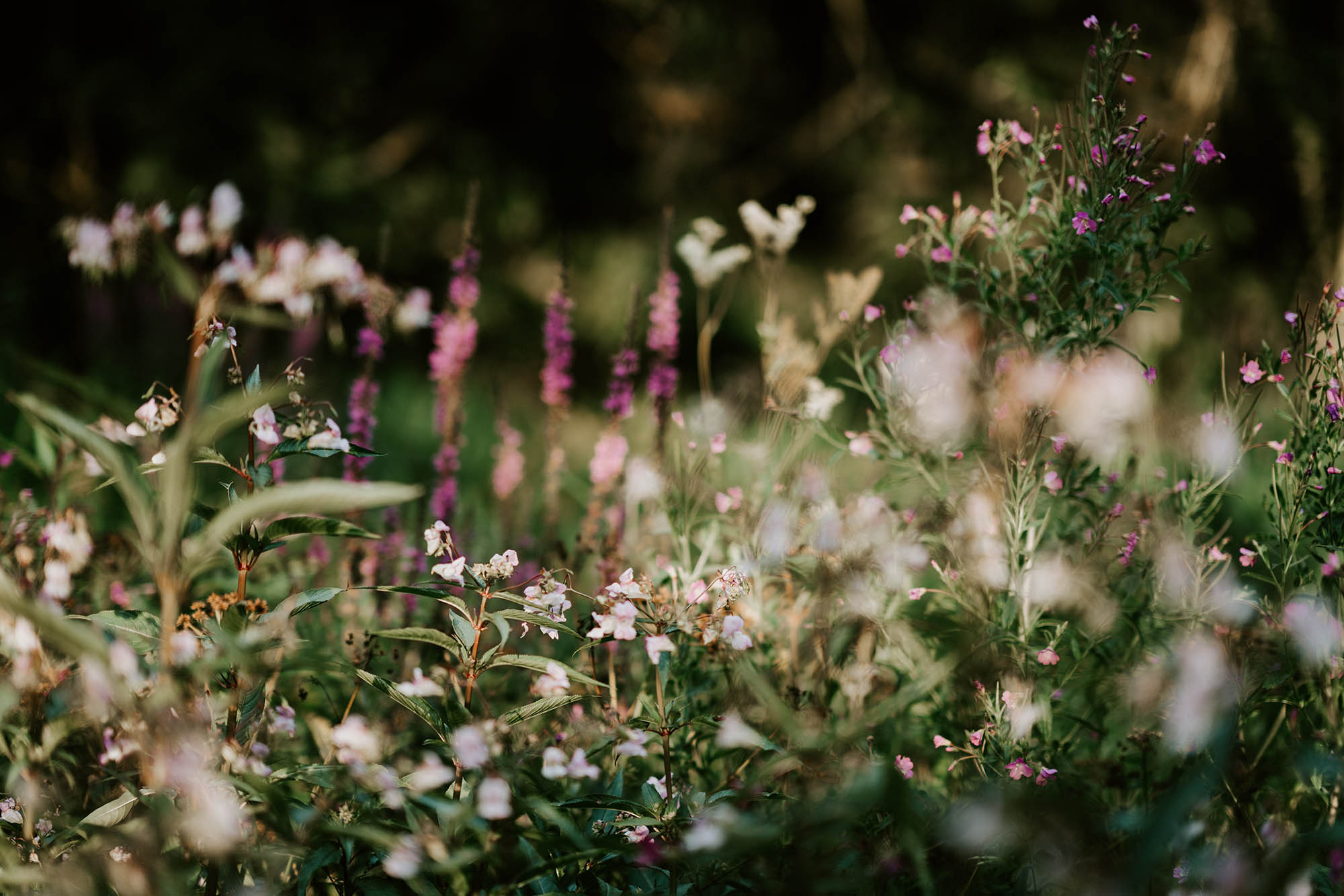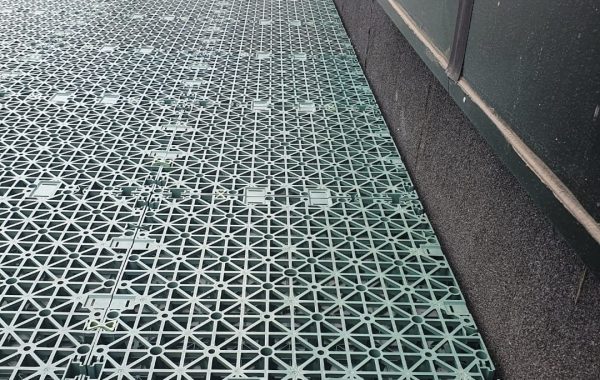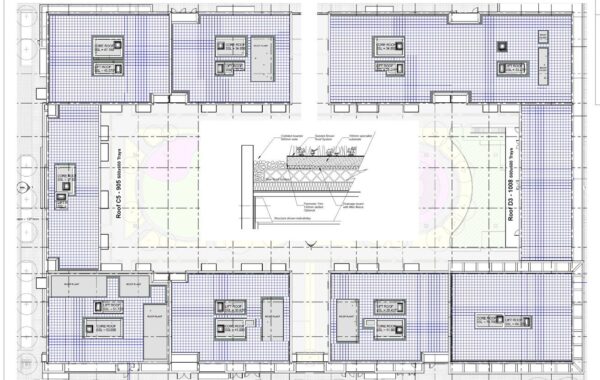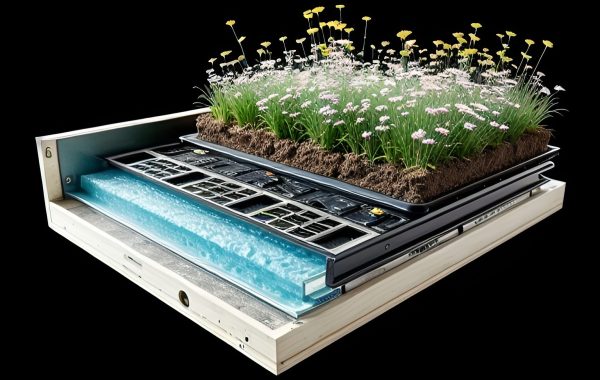A Symbiotic Solution for Sustainable Urban Environments
As urban environments continue to expand, cities face unprecedented challenges related to stormwater management, urban heat islands, and diminishing green spaces. In response to these challenges, innovative solutions have emerged, including blue roofs and green roofs. While each of these technologies offers unique benefits, combining them creates a powerful and holistic approach to sustainable urban development. In this in-depth article, we will explore how blue roofs and green roofs can work together, the installation process, and the myriad advantages of this symbiotic relationship.
Table of Contents
1. Introduction
– The Urban Environment Conundrum
– The Promise of Blue Roofs and Green Roofs
2. Blue Roofs and Green Roofs: An Overview
– What Are Blue Roofs?
– What Are Green Roofs?
3. The Synergy of Blue Roofs and Green Roofs
– How Blue Roofs and Green Roofs Complement Each Other
– The Concept of “Blue-Green Roofs”
4. Installation Process
– Design Considerations
– Construction and Integration
5. Benefits of Blue Roofs and Green Roofs Integration
– Stormwater Management and Retention
– Mitigating Urban Heat Islands
– Biodiversity and Ecosystem Services
– Energy Efficiency and Air Quality
– Aesthetic and Recreational Benefits
6. Case Studies: Realising the Potential
– Examples of Successful Blue-Green Roof Projects
7. Challenges and Considerations
– Maintenance and Cost Factors
– Regulatory and Design Challenges
8. The Future of Sustainable Urban Environments
– Expanding the Adoption of Blue-Green Roofs
– Collaborative Efforts and Research
9. Conclusion
– The Path to Greener, Resilient Cities
1. Introduction
The Urban Environment Conundrum
Urbanisation is an unstoppable global trend, with more than half of the world’s population residing in cities. While this rapid urban expansion brings economic opportunities and cultural richness, it also presents a complex set of challenges. Among these challenges, two critical issues stand out: stormwater management and urban heat islands.
– Stormwater Management:
As cities grow, natural landscapes are replaced by impervious surfaces like concrete and asphalt. When rain falls on these surfaces, it cannot be absorbed into the ground as it would in natural environments. Instead, it becomes runoff, overwhelming drainage systems, causing floods, and carrying pollutants into water bodies.
– Urban Heat Islands:
The dense concentration of buildings, roads, and other heat-absorbing materials in cities leads to elevated temperatures compared to surrounding rural areas. This phenomenon, known as the urban heat island effect, contributes to increased energy consumption, heat-related illnesses, and overall discomfort for urban residents.
The Promise of Blue Roofs and Green Roofs
Blue roofs and green roofs are two innovative solutions that address these urban challenges. Blue roofs focus on managing stormwater effectively, while green roofs contribute to mitigating urban heat islands and enhancing biodiversity. Individually, these technologies offer substantial benefits. However, when integrated, blue roofs and green roofs create a synergistic effect that significantly enhances their collective impact on urban sustainability.
In this article, we will explore the symbiotic relationship between blue roofs and green roofs, understanding how they complement each other and examining the installation process. We will also delve into the numerous advantages of combining these technologies, from improved stormwater management to enhanced urban biodiversity.
Blue Roofs and Green Roofs: An Overview
What Are Blue Roofs?
Blue roofs are innovative stormwater management systems designed to slow down, capture, and control rainwater runoff from rooftops. Unlike conventional roofs that quickly shed rainwater, blue roofs temporarily retain it, allowing for gradual release or reuse. These roofs are characterized by specific components, including storage layers, control mechanisms, and safety features.
What Are Green Roofs?
Green roofs, on the other hand, are vegetated rooftop systems that transform otherwise underutilized spaces into vibrant gardens. They consist of multiple layers, including waterproofing membranes, drainage systems, growing media, and vegetation. Green roofs offer a multitude of benefits, such as reducing heat absorption, improving air quality, and supporting biodiversity.
The Synergy of Blue Roofs and Green Roofs
How Blue Roofs and Green Roofs Complement Each Other
The synergy between blue roofs and green roofs lies in their complementary functions:
– Blue Roofs for Stormwater Management:
Blue roofs excel at managing rainwater by capturing and controlling runoff. They prevent overwhelming drainage systems, reduce the risk of flooding, and protect water bodies from pollutants. In a blue roof system, rainwater is temporarily stored before controlled release or reuse.
– Green Roofs for Heat Mitigation and Biodiversity:
Green roofs mitigate the urban heat island effect by providing a layer of vegetation that absorbs sunlight and releases it slowly. This cooling effect benefits both the building’s interior and the surrounding environment. Additionally, green roofs offer habitat opportunities for plants and wildlife, enhancing urban biodiversity.
The Concept of “Blue-Green Roofs”
The integration of blue roofs and green roofs is often referred to as “blue-green roofs.” In a blue-green roof system, the green roof’s vegetation and growing media are incorporated into the blue roof’s design. This combination allows for a multifunctional rooftop space that not only manages stormwater effectively but also contributes to urban cooling and biodiversity conservation.
Installation Process
Design Considerations
The successful integration of blue roofs and green roofs begins with careful planning and design. Some key considerations include:
– Load-Bearing Capacity:
Ensuring that the building structure can support the additional weight of the blue-green roof system.
– Plant Selection:
Choosing vegetation that thrives in the rooftop environment and aligns with biodiversity goals.
– Water Management:
Designing an efficient rainwater capture and storage system that complements the green roof’s irrigation needs.
– Safety Measures:
Implementing safety features like guardrails and access points for maintenance.
Construction and Integration
The construction process involves layering the blue roof components, including the waterproofing membrane, drainage systems, storage layers, and control mechanisms. The green roof elements, such as the growing media and vegetation, are then integrated into this structure. Proper installation ensures seamless coordination between the two systems.
Benefits of Blue Roofs and Green Roofs Integration
The integration of blue roofs and green roofs offers a multitude of benefits that extend beyond what each technology can achieve individually:
Stormwater Management and Retention
By capturing rainwater and gradually releasing it or using it for irrigation, blue-green roofs significantly reduce the volume and velocity of stormwater runoff. This prevents flooding, minimises erosion, and protects water bodies from pollution. Urban areas become more resilient to heavy rainfall events, safeguarding both the environment and property.
Mitigating Urban Heat Islands
Green roofs’ cooling effect, combined with blue roofs’ ability to retain water for irrigation, creates a microclimate that counters the urban heat island effect. This means cooler rooftop temperatures, reduced energy consumption for air conditioning, and enhanced comfort for building occupants.
Biodiversity and Ecosystem Services
The vegetation on green roofs attracts pollinators, birds, and other wildlife, contributing to urban biodiversity. Additionally, blue-green roofs offer diverse habitat opportunities, fostering biodiversity even in densely populated areas. This enhances ecosystem services, such as pollination and pest control, benefiting both urban residents and the environment.
Energy Efficiency and Air Quality
The temperature-regulating properties of green roofs translate into energy savings as buildings require less cooling during hot months. Improved air quality results from the vegetation’s ability to filter pollutants and capture particulate matter, leading to healthier urban environments.
Aesthetic and Recreational Benefits
Blue-green roofs transform rooftops into vibrant, aesthetically pleasing spaces that can be used for recreation, relaxation, or even urban farming. These green oases offer a respite from the concrete jungle, enhancing the quality of urban life.
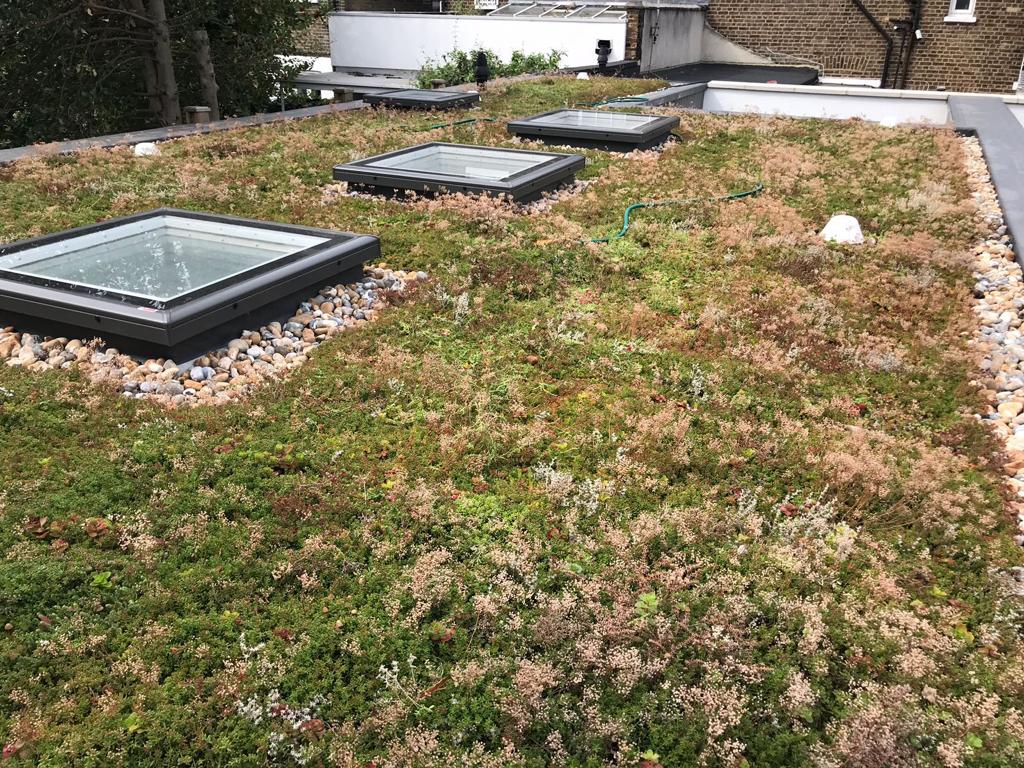
Blue Roofs seamlessly merge into the urban environment
Case Studies: Realising the Potential
To illustrate the real-world impact of blue-green roofs, let’s explore some noteworthy case studies:
1. Chicago City Hall
Chicago’s City Hall boasts one of the most iconic blue-green roofs. Its combination of blue roof technology and a lush green roof has led to significant energy savings, reduced stormwater runoff, and enhanced aesthetics in the heart of the city.
2. The Brooklyn Navy Yard, New York City
The Brooklyn Navy Yard features a blue-green roof system that supports solar panels, native plantings, and rainwater harvesting. This integration showcases how multifunctional rooftop spaces can contribute to sustainability and resilience in urban areas.
3. Copenhagen’s Green Lighthouse
The Green Lighthouse, Denmark’s first carbon-neutral public building, showcases the synergy between blue roofs and green roofs. The building’s integrated system effectively manages stormwater, reduces energy consumption, and supports local biodiversity.
4. The Eden Project, Cornwall
The Eden Project in Cornwall, UK, is a remarkable example of blue-green roof integration. This iconic attraction features a series of interconnected biomes with lush vegetation and educational exhibits. The blue-green roof system effectively manages rainwater runoff from these expansive structures, reducing the strain on local drainage systems and enhancing the sustainability of this eco-friendly destination.
5. The Bullitt Center, London
In the heart of London, the Bullitt Center stands as a testament to sustainable urban development. Its blue-green roof system combines rainwater capture with a flourishing rooftop garden. This integration not only helps regulate stormwater but also contributes to cooling the surrounding area, creating a microclimate of comfort and environmental stewardship amidst the bustling cityscape.
6. Manchester’s Green Infrastructure Strategy
The city of Manchester has embraced the potential of blue-green roofs as part of its broader green infrastructure strategy. Numerous blue-green roof installations across the city have demonstrated their effectiveness in reducing flooding incidents and enhancing urban greenery. These projects showcase how municipalities can proactively address stormwater challenges while promoting urban biodiversity.
These case studies demonstrate the adaptability and success of blue-green roof systems in diverse urban contexts, serving as inspiring models for sustainable urban development worldwide.
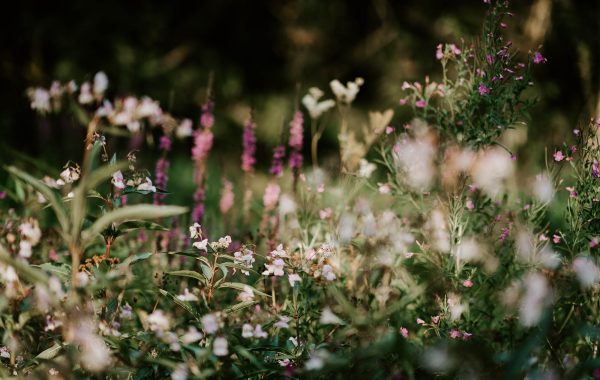
Challenges and Considerations
While the integration of blue roofs and green roofs holds immense potential, it is not without its challenges:
MAINTENANCE AND COST FACTORS
Maintaining blue-green roofs requires ongoing attention to ensure that both systems function optimally. The cost of installation and maintenance may be higher initially, but the long-term benefits often outweigh these expenses.
REGULATORY AND DESIGN CHALLENGES
Navigating local building codes and regulations can be complex when implementing blue-green roof systems. Collaboration with architects, engineers, and local authorities is crucial to address these challenges effectively.
The Future of Sustainable Urban Environments
The integration of blue roofs and green roofs represents a pivotal step toward creating greener, more resilient cities. As the world grapples with the consequences of climate change and rapid urbanisation, the demand for sustainable solutions will only grow. Blue-green roofs offer a pathway to address multiple urban challenges simultaneously, providing a template for a more sustainable urban future.
Conclusion
The integration of blue roofs and green roofs is not just a technological feat; it is a testament to our ability to harmonise urban development with nature. Together, these systems redefine how we approach urban stormwater management, mitigate the urban heat island effect, and enhance the quality of life in cities. As we move toward a future characterised by resilience, sustainability, and environmental stewardship, the symbiotic relationship between blue roofs and green roofs will undoubtedly play a pivotal role in shaping our urban landscapes for generations to come.


